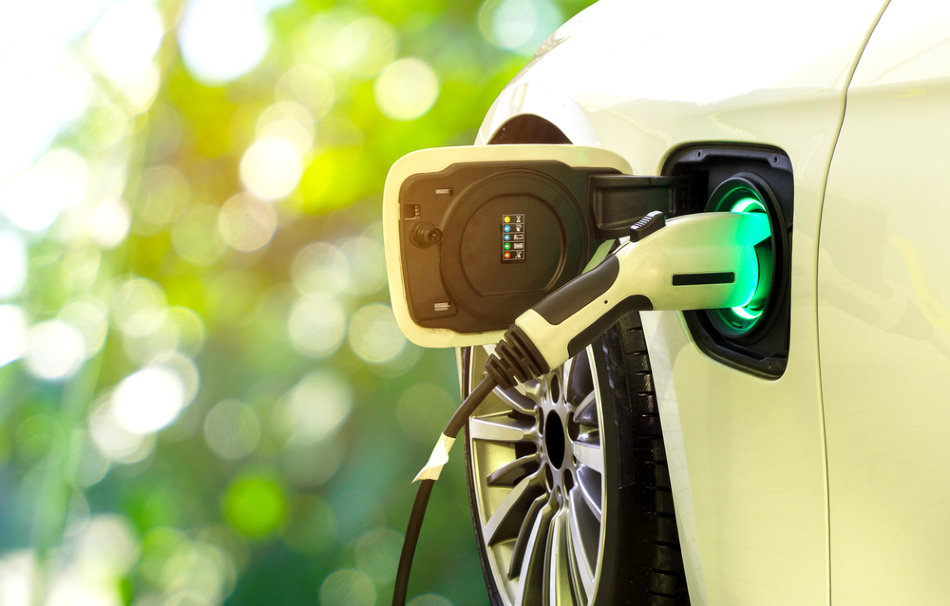
Image Credit: Smile Fight/Shutterstock.com
Modern life heavily relies on the humble battery, a simple device whose chemical reactions produce a flow of electrons in a circuit that can power everything from consumer electronics such as phones and laptops, to much larger entities such as electric vehicles. The electric vehicle's rise has resulted in a dramatic increase in the demand for energy storage, in particular rechargeable lithium-ion (Li-ion) batteries.
Electricity Storage Innovations
A recent report, Innovations in batteries and electricity storage, from the European Patent Office (EPO) and International Energy Agency (IEA) revealed energy storage innovations – as demonstrated by patenting activity – grew at an average annual rate of 14% between 2005 and 2018, four times faster than the average of all technology fields.
Batteries accounted for almost 90% of all patenting activity related to electricity storage, attributable to advances in Li-ion batteries used in consumer electronics and electric vehicles (EV). Li-ion technology has driven most battery innovation since 2005, accounting for 45% of all patenting activity related to battery cells in 2018, compared to 7% for cells hinged on other chemistries.
In 2011, EVs overtook consumer electronics as the most significant driver for Li-ion-related technologies. Electric mobility has resulted in the development of new Li-ion chemistries, which are expected to improve power output, durability, charge and discharge speed, and recyclability. These advances have also had a positive knock-on effect on stationary applications, including electricity grid management.
Clean Energy Transition
Technological advancement is driven by the overwhelming need to integrate larger quantities of renewable energies such as wind and solar energy into electricity networks. Batteries are a heavy and costly way of storing energy onboard vehicles, so improved storage options that allow the integration of large amounts of renewable energy into the system as a whole would go a long way towards eliminating fossil fuel use.
Developing improved and cheaper electricity storage is a crucial future challenge as we move towards clean energy technologies and more sustainable energy goals. To achieve this, close to 10,000 gigawatt-hours of batteries and other forms of energy storage are needed globally by 2040, a fifty-fold growth of the current market.
“IEA projections make it clear that energy storage will need to grow exponentially in the coming decades to enable the world to meet international climate and sustainable energy goals,” said Fatih Birol, IEA Executive Director. “Accelerated innovation will be essential for achieving that growth.”
"Electricity storage technology is critical when it comes to meeting the demand for electric mobility and achieving the shift towards renewable energy that is needed if we are to mitigate climate change. The rapid and sustained rise in electricity storage innovation shows that inventors and businesses are tackling the challenge of the energy transition."
EPO President António Campinos
Current Trends and the Future
The report details the major trends in electricity storage innovation between 2000 and 2018 regarding international patent families (IPF) – a patent filed and published in at least two patent offices worldwide. As these can be filed months or years before a product reaches the market, they often provide an early indicator of upcoming technology trends.
According to the report, Japan and South Korea have established a strong lead in battery technology, with technical advances and mass production, resulting in a significant reduction in battery costs in recent years. Asian companies account for nine of the top 10 global applicants for battery-related patents, and two-thirds of the top 25, which also included six European and two American companies.
“The patent data reveals that while Asia has a strong lead in this strategic industry, the US and Europe can count on a rich innovation ecosystem, including a large number of SMEs and research institutions, to help them stay in the race for the next generation of batteries,” said Campinos.
Businesses worldwide have filed more than 65,000 IPFs in electricity storage since 2000, with inventions in batteries making up 90% of electricity storage patents. Batteries have been the only area to continue experiencing a strong upward trend in recent years, a sign of their dominant position in electricity storage innovations.
Patenting activity in the manufacture of battery cells and cell-related engineering developments has grown threefold in the last 10 years. The two fields account for 47% of all activity related to battery cells in 2018. This illustrates a mature industry and the strategic importance of developing efficient mass production techniques.
Find out more about clean technology on the market today
Conclusion
Batteries can play an essential role in the transition to clean energy; if electricity can be generated from renewable sources and produce no emissions at the point of use, then we are moving in the right direction to achieve clean and sustainable energy goals. However, better means of storing electricity in large quantities is needed at an affordable price for both consumers and suppliers. It is clear from the number of patents filed within this century alone that progress is most certainly being made.
References and Further Reading
European Patent Office (2020) Innovation in batteries and electricity storage http://documents.epo.org/projects/babylon/eponet.nsf/0/969395F58EB07213C12585E7002C7046/$FILE/battery_study_executive_summary_en.pdf (Accessed 9 October 2020).
European Patent Office (2020) EPO-IEA study: rapid rise in battery innovation playing key role in clean energy transition, responsesource [Online] https://pressreleases.responsesource.com/news/100118/epo-iea-study-rapid-rise-in-battery-innovation-playing-key-role/ Accessed 9 October 2020).
Disclaimer: The views expressed here are those of the author expressed in their private capacity and do not necessarily represent the views of AZoM.com Limited T/A AZoNetwork the owner and operator of this website. This disclaimer forms part of the Terms and conditions of use of this website.